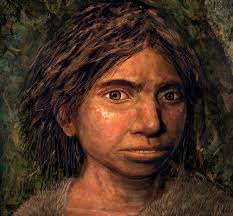Denisovans : Study

Denisovans survived and thrived on the high-altitude Tibetan plateau for more than 100,000 years, according to a new study.
- Denisovans are an extinct species of hominid and a close relative to modern humans.
- They’re a recent addition to the human family tree—scientists first identified Denisovan remains from a cave in Siberia in 2010.
- They lived across a wide range of areas and conditions, from the cold mountains of Siberia and Tibet to the jungles of Southeast Asia during the last Ice Age.
- Time Period: 500,000 to 30,000 years ago
- DNA evidence suggests Denisovans are related to both Neanderthalsand modern humans, and may have interbred with both.
- Denisovans share a common ancestor with both modern humans and Neanderthals.
- This common ancestor, called Homo heidelbergensis, most likely lived in Africa.
- Denisovans may have had dark skin, dark hair and dark eyes.
- The Denisovan genome appears to have low genetic diversity, which means their population may never have been very large.




